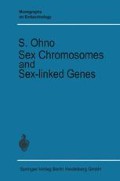Abstract
Today, the X and Y of mammals and the Z and W of birds are totally different from each other in size as well as genetic content. Yet, it can be shown that the two were originally an homologous pair of ordinary chromosomes or autosomes. A broad review of the sex-determining mechanism of various vertebrates enables us to reconstruct, step-by-step, this process of sex chromosome differentiation.
Access this chapter
Tax calculation will be finalised at checkout
Purchases are for personal use only
Preview
Unable to display preview. Download preview PDF.
References
Aida, T.: On the inheritance of color in a fresh-water fish Aplocheilus latipes Temmick and Schlegel, with special reference to the sex-linked inheritance. Genetics 6, 554–573 (1921).
Atz, J. W.: Intersexuality in fishes: In: Intersexuality in vertebrates including man, pp. 145–232. London and New York: Academic Press 1964.
Chang, C. Y., and E. Witschi: Genie control and hormonal reversal of sex differentiation in Xenopus. Proc. Soc. exp. Biol. (N. Y.) 93, 140–144 (1956).
Gallien, L.: Inversion totale du sexe chez Xenopus laevis Daud. á la suite d’un treatment gynogéne par le benzoate d’oestradiol administré pendant la vie larvaire. C. R. Acad. Sci. (Paris) 237, 1565–1566 (1953).
Gordon, M.: Genetics of Platypoecilus maculatus. IV. The sex-determining mechanism in two wild populations of the Mexican platyfish. Genetics 32, 8–17 (1947).
— Genetics of Platypoecilus maculatus. V. Heterogametic sex-determining mechanism in females of a domesticated stock originally from British Honduras. Zoologica 32, 127–134 (1951).
Harrington, R. W.: Twenty-four-hour rhythms of internal self-fertilization and of oviposition by hermaphrodites of Rivulus marmoratus. Physiol. Zool. 36, 325–341 (1963).
Humphrey, R. R.: Sex inversion in the amphibia. Biol. Symp. 9, 81–104 (1942).
Lavenda, N.: Sexual differences and normal protogynous hermaphroditism in the Atlantic sea bass, Centropristes striatus. Copeia 3, 185–194 (1949).
Matthey, R.: Les chromosomes de vertébrés. Lausanne 1949.
Mikamo, K., and E. Witschi: Masculinization and breeding of the WW Xenopus. Experientia 20, 622 (1964).
Smith, C. L.: Hermaphroditism in some serranid fishes from Bermuda. Pap. Michigan Acad. Sci., Arts and Letters 44, 111–119 (1959).
Winge, O.: One-sided masculine and sex-linked inheritance in Lebistes reticulatus. J. Genetics 12, 145–162 (1922).
—, and E. Ditlevsen: Color inheritance and sex determination in Lebistes. Heredity 1, 65–83 (1947).
Yamamoto, T.: Progenies of sex-reversal males in the medaka, Oryzias latipes. J. exp. Zool. 146, 163–180 (1961).
Author information
Authors and Affiliations
Rights and permissions
Copyright information
© 1966 Springer-Verlag Berlin Heidelberg
About this chapter
Cite this chapter
Ohno, S. (1966). Evidence Indicating that the X and the Y or the Z and the W were Originally an Homologous Pair of Ordinary Chromosomes. In: Sex Chromosomes and Sex-linked Genes. Monographs on Endocrinology, vol 1 . Springer, Berlin, Heidelberg. https://doi.org/10.1007/978-3-662-35113-0_2
Download citation
DOI: https://doi.org/10.1007/978-3-662-35113-0_2
Publisher Name: Springer, Berlin, Heidelberg
Print ISBN: 978-3-662-34792-8
Online ISBN: 978-3-662-35113-0
eBook Packages: Springer Book Archive

